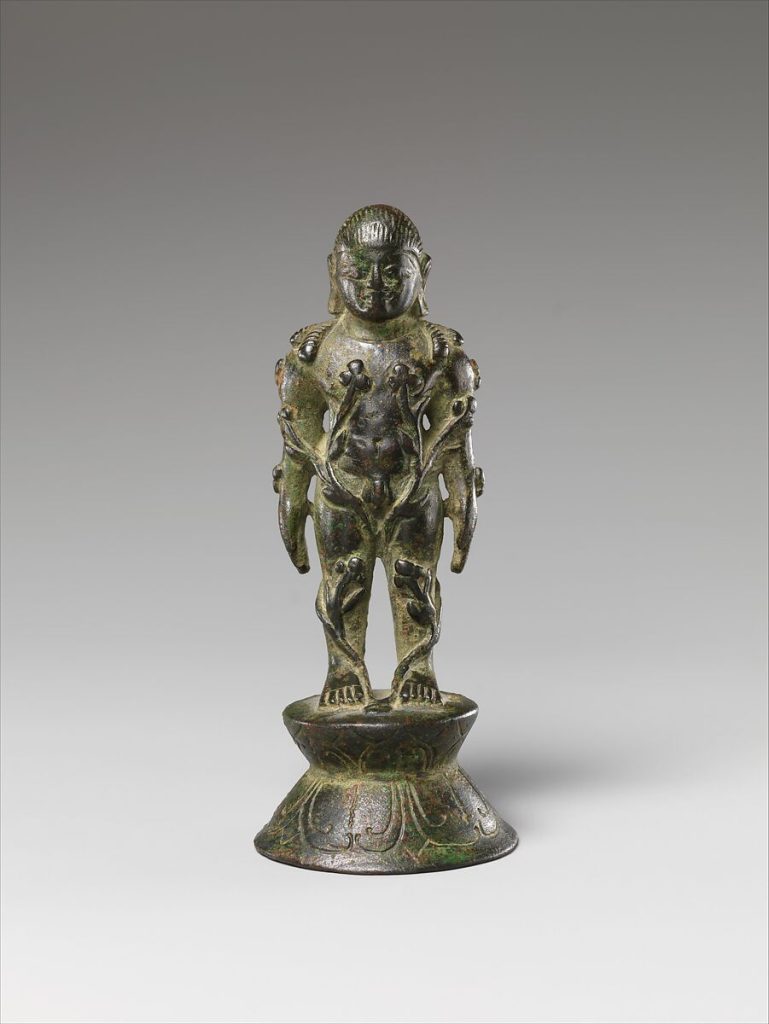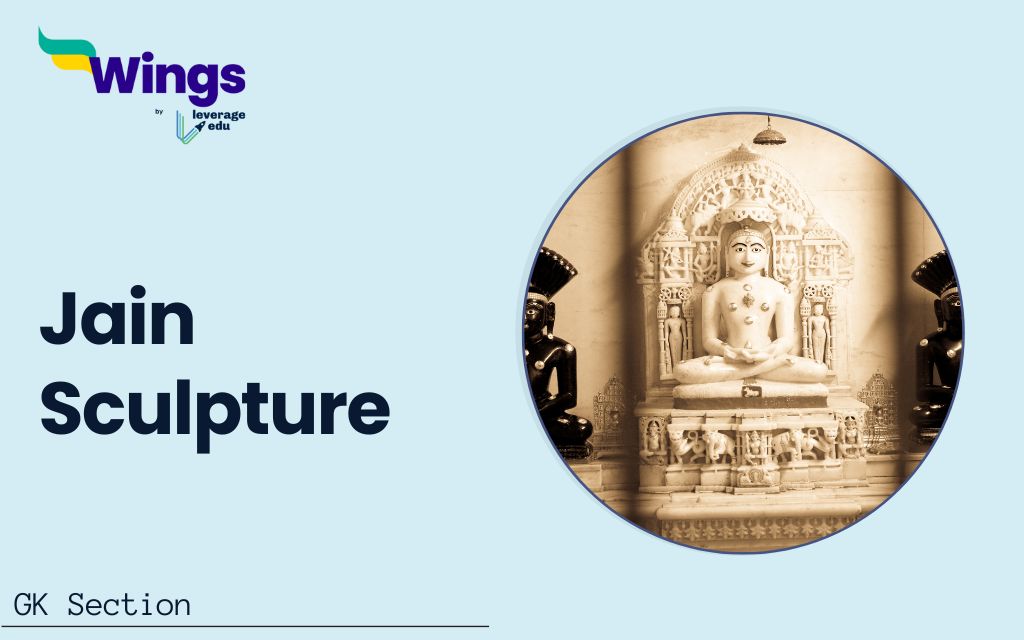Jain sculpture is an important art form that reflects the beliefs and teachings of Jainism, one of India’s oldest religions. Jainism focuses on non-violence, truth, and respect for all living beings. There are 24 Tirthankaras, with Mahavira being the most recent. These sculptures can be found in temples and other sacred sites, where they are used for worship and devotion. The art form has a rich history, back to at least the 3rd century BCE, and has evolved over time.
Jain sculptures not only serve as objects of worship but also represent the cultural and spiritual heritage of the Jain community, making them an important part of India’s artistic landscape. In this article, we will explore everything related to the Jain sculpture in detail. Apart from gaining general knowledge, this topic also appears in various competitive exams like UPSC ,SSC, preliminary exams, and more.
Contents
History of Jain Sculpture
Jain sculpture has a long history that goes back to ancient India, with the earliest examples appearing around the 3rd century BCE. The art form grew and changed over the centuries, influenced by different rulers and cultural exchanges with other religions. Jain sculptures became especially popular during the medieval period, with many beautiful temples built to honor the Tirthankaras.
- Some ancient seals from this civilization show nude figures in meditative poses, similar to Jain images.
- This is one of the earliest known stone sculptures of a human figure, dating back to the 3rd century BCE.
- During the 2nd-3rd centuries CE, the Kushan Empire helped Jain art flourish. Many sculptures from this time were dedicated to Kushan kings.
Must Read: Jainism Philosophy UPSC: Philosophy and Literature
Characteristics of Jain Sculpture
Jain sculpture is a unique and important art form that reflects the beliefs and values of Jainism. Here are some key characteristics that define Jain sculpture:

Tirthankaras
- The most known figures in Jain sculpture are the Tirthankaras, who are spiritual teachers that have achieved liberation.
- They are often shown in either seated or standing positions, conveying a sense of peace and meditation.
- Tirthankaras are usually shown nude, showing their ascetic lifestyle and detachment from material things.
Meditative Poses
- Jain sculptures show Tirthankaras in meditative postures.
- When standing, their arms are held straight down at their sides, a position known as kāyotsarga.
- Seated figures often have their legs crossed and hands placed in their laps in a sign of meditation called dhyāna.
Symbolism
- Jain sculptures include various symbols that represent important concepts in Jainism.
- Common symbols include the lotus, which shows purity, and the swastika, showing well-being and good fortune.
- The shrīvatsa symbol, often found on Tirthankara figures, shows the benefits of worship.
Distinctive Features
- Each Tirthankara has a specific thing that helps identify them. For example, Rishabhanatha (the first Tirthankara) is shown with long hair, while others are shown with tonsured heads.
- Jain sculptures may also include representations of yakshas and yakshinis, who are guardian deities in Jainism.
Ayagapata
- Ayagapata is a type of wish used in Jain worship.
- These slabs are decorated with images and symbols central to Jain beliefs, serving as offerings or objects of devotion.
Narrative Scenes
- Jain sculptures often shown scenes from the lives of the Tirthankaras, particularly stories about Mahāvīra, the most recent Tirthankara.
- These narratives help convey the teachings and principles of Jainism to devotees.
Must Read: Gupta Empire: Rise, Rulers, UPSC Notes
Jain Sculpture in Temples and Worship
Jain sculpture is very important in Jain temples and plays a key role in the practice of worship. These sculptures help people connect with their faith and understand the teachings of Jainism. Here’s how Jain sculptures are used in temples and during worship:

Central Focus of Worship
- The most important sculptures in Jain temples are the Tirthankaras, who are spiritual teachers.
- These sculptures are usually placed on altars, making them the main focus for prayers and meditation.
- Devotees visit these temples to pray, perform rituals, and get blessings from the Tirthankaras.
Ayagapata
- Ayagapata is a special type of stone slab used in Jain worship.
- These slabs are decorated with symbols and images that are important in Jainism, like the stupa and the dharmachakra.
- Ayagapata slabs are often used as offerings during religious ceremonies, adding to the spiritual atmosphere of the temple.
Narrative Scenes
- Jain temples often have sculptures that tell stories from the lives of the Tirthankaras, especially Mahāvīra, the most recent Tirthankara.
- These stories help teach devotees about Jain values and the qualities of the Tirthankaras.
Decorative Elements
- Besides Tirthankara sculptures, Jain temples are filled with other images and symbols, including yakshas and yakshinis, who are guardian deities.
- The walls, pillars, and ceilings of temples are often beautifully decorated with carvings that tell stories and showcase the beauty of Jain art.
Cave Temples and Rock-Cut Sculptures
- Many Jain sculptures can be found in cave temples, like those at Udayagiri and Khandagiri in Odisha.
- These caves have rock-cut sculptures of Tirthankaras and other important figures, showing the skill of ancient Jain artists.
- These cave temples were places of worship for Jain monks and provided a peaceful environment for meditation.
Related Posts
| Rajput Architecture | Assamese Literature |
| Religions in India | Jain Art and Architecture |
| Jain Art and Architecture | Temples of Himachal Pradesh |
FAQs
What is Jain sculpture?
Jain sculpture is an important art form that represents the teachings of Jainism, featuring figures of Tirthankaras and rich symbolism.
What are the key characteristics of Jain sculpture?
Key characteristics include depictions of Tirthankaras in meditative poses, use of significant symbols like the lotus and swastika, and detailed narrative scenes from their lives.
How is Jain sculpture used in temples?
In Jain temples, sculptures serve as the central focus for worship, with Tirthankaras placed on altars and decorative elements that enhance the spiritual atmosphere.
This was all about the “Jain sculpture” For more such informative blogs, check out our UPSC Exams Section and Study Material Section, or you can learn more about us by visiting our Indian exams page.
 One app for all your study abroad needs
One app for all your study abroad needs














